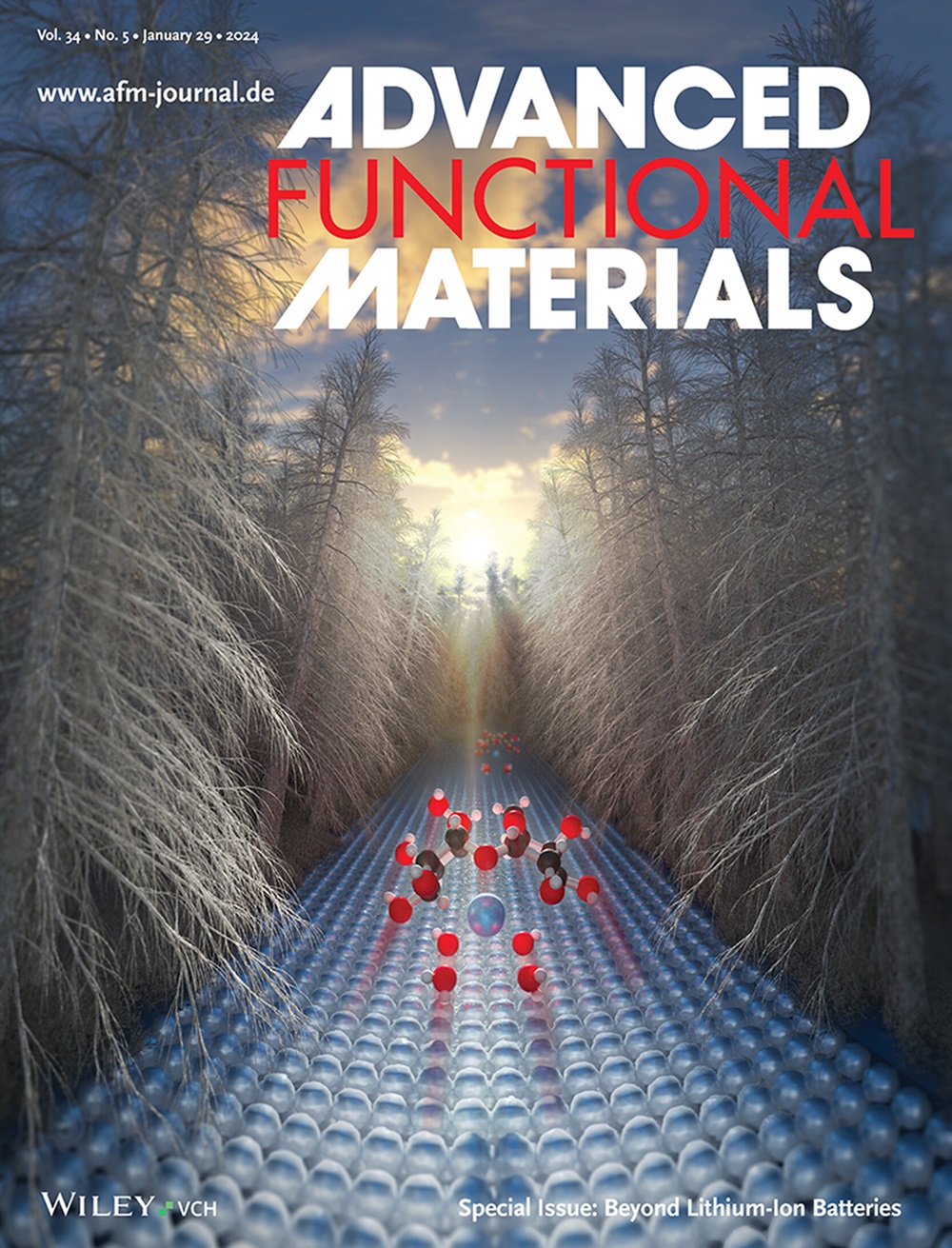飞秒激光调制发散离子动力学在CuInP2S6中的鲁棒神经形态计算
IF 18.5
1区 材料科学
Q1 CHEMISTRY, MULTIDISCIPLINARY
引用次数: 0
摘要
受到人类大脑的高效率和鲁棒性的启发,基于离子的人工突触装置在神经形态计算方面得到了广泛的探索。然而,由于离子动力学的内在可变性,在没有额外组件的情况下实现稳定性和可靠的功能仍然具有挑战性。本文通过飞秒激光治疗,证明了一个CuInP2S6 (CIPS)人工突触的稳态可塑性。激光诱导的调制表现出状态依赖效应,在低电导状态(激活)增强离子迁移率,在高电导状态(抑制)增强离子再分布。激活效应通过提高突触后电流促进短期可塑性,抑制效应通过降低开关变异性增强长期稳定性。此外,双端CIPS装置中的可调谐神经形态离子调制通过电场、光学照明和飞秒激光治疗的综合影响协同实现。最后,对基于单个代表性器件的脉冲神经网络仿真进行了演示,通过飞秒激光调制,将修正国家标准与技术研究所(MNIST)手写数字识别的精度从92.5%提高到98.2%。这项工作提出了一种有效操纵二维范德华铁离子材料中的离子动力学的新策略,有助于自适应和鲁棒神经形态计算系统的发展。本文章由计算机程序翻译,如有差异,请以英文原文为准。

Robust Neuromorphic Computing Enabled by Femtosecond Laser-Modulated Divergent Ion Dynamics in CuInP2S6
Inspired by the high efficiency and robustness of human brains, ion-based artificial synaptic devices have been widely explored for neuromorphic computing. However, achieving stability and reliable functionality without additional components remains challenging due to the inherent variability of ion dynamics. Herein, homeostatic plasticity is demonstrated in a CuInP2S6 (CIPS) artificial synapse via femtosecond laser treatment. The laser-induced modulation exhibits state-dependent effects, enhancing ionic mobility in the low conductance state (activation) and redistributing ions in the high conductance state (inhibition). The activation effect facilitates short-term plasticity by improving postsynaptic current, while the inhibition effect enhances long-term stability through reducing switching variability. Furthermore, tunable neuromorphic ion modulation in a two-terminal CIPS device is synergistically achieved through the combined influence of an electric field, optical illumination, and femtosecond laser treatment. Finally, a spiking neural network simulation based on a single representative device is demonstrated, achieving an improvement in the accuracy of Modified National Institute of Standards and Technology (MNIST) handwritten digit recognition from 92.5% to 98.2% via femtosecond laser modulation. This work presents a novel strategy for efficiently manipulating ion dynamics in 2D van der Waals ferroionic materials, contributing to the development of adaptive and robust neuromorphic computing systems.
求助全文
通过发布文献求助,成功后即可免费获取论文全文。
去求助
来源期刊

Advanced Functional Materials
工程技术-材料科学:综合
CiteScore
29.50
自引率
4.20%
发文量
2086
审稿时长
2.1 months
期刊介绍:
Firmly established as a top-tier materials science journal, Advanced Functional Materials reports breakthrough research in all aspects of materials science, including nanotechnology, chemistry, physics, and biology every week.
Advanced Functional Materials is known for its rapid and fair peer review, quality content, and high impact, making it the first choice of the international materials science community.
 求助内容:
求助内容: 应助结果提醒方式:
应助结果提醒方式:


